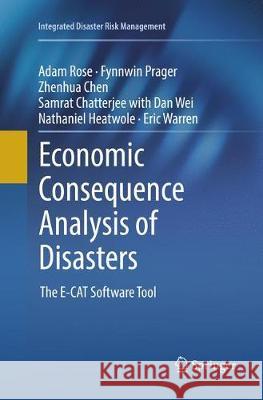Economic Consequence Analysis of Disasters: The E-Cat Software Tool » książka
topmenu
Economic Consequence Analysis of Disasters: The E-Cat Software Tool
ISBN-13: 9789811096532 / Angielski / Miękka / 2018 / 137 str.
Kategorie:
Kategorie BISAC:
Wydawca:
Springer
Seria wydawnicza:
Język:
Angielski
ISBN-13:
9789811096532
Rok wydania:
2018
Wydanie:
Softcover Repri
Ilość stron:
137
Waga:
0.37 kg
Wymiary:
23.19 x 15.8 x 1.27
Oprawa:
Miękka
Wolumenów:
01











